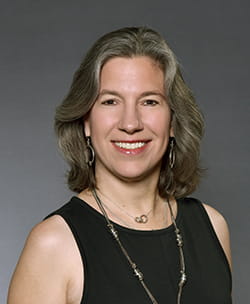
Thought Leadership
What’s Your Leadership Story? Make Sure It's the One You Intend to Tell
What’s your story? You do have one, according to Kellogg Clinical Professor of Leadership Michelle Buck, who teaches in such Executive Education offerings as Leading for Impact within Family Enterprise and Women's Senior Leadership programs. And as a leader, you’re conveying it to those who work with you, even if it’s not the one you’d like to communicate.
“Every day, whether you realize it or not, you’re telling a story as a leader,” Buck explained. “What do you want that story to be, and how are other people experiencing it?”
For example, a leader might claim to have an open-door policy that means anyone can walk into their office to talk at any time. However, if the reality of the situation is that the person making that promise is too busy and is never available for such a conversation, even with good reason, it doesn’t matter how much they play up their approachability. The story, as others see it, is that the leader is walled off. “What’s the difference between the intention and what others are experiencing?” Buck said. “The busier we are, the less aware we are that there may be inconsistencies.”
Buck paraphrases Ralph Waldo Emerson when teaching her module on leading with vision and purpose: your actions speak so loudly, I can’t even hear what you’re saying. In practice, leaders who say one thing and do another dilute their effectiveness because those in their organization don’t know which to believe. “It creates an inconsistent message for them,” she said. “It sometimes leaves people less engaged, and also less trusting. And all too often, leaders aren’t even aware of their inconsistency.”
Leaders tell a story through what they say and do and—just as critical—through what they don’t say and don’t do. The latter carries as much weight because we’re letting people know that the things we ignore are not valued. “We convey a message through the questions we ask and those we don’t bother to address,” Buck said. “The ones we don’t bring up are not a priority, and we’re signaling that we don’t want or need to know any more about them.”
So how does one gain awareness of the story they’re telling and remain alert to the risk of sending unintended messages? “They must begin with a lot of self-reflection about what message they intend to convey. What are my key values and beliefs? How do I want to be known?” Buck stressed. “Next, they must think about their daily words and actions that convey that message, as well as any words or actions that may be perceived as inconsistent. For example, if we are not getting the response from others that we want or expect, we have to examine whether they are perceiving a different message.”
Next, leaders need to engage in perspective-taking, Buck explained. “I either need to get actual feedback on what my team is getting from me, story-wise, or I need to put myself in their shoes and determine what their experience of me might be. If I’m too busy, I am less likely to reflect or to reach out to others. In the meantime, if engagement and performance are declining, I may attribute the problem to other reasons and not realize that I, myself, can improve the situation.”
 |
Michelle Buck is Clinical Professor of Leadership at the Kellogg School of Management at Northwestern University. She previously served as the School's first Director of Leadership Initiatives from 2006 to 2013, designing and coordinating opportunities for personal leadership development to complement the School's academic curriculum. She has also served as academic director of numerous Kellogg executive programs, including partnership programs with Fundacao dom Cabral in Brazil as well as customized company-specific programs. |
Download a Brochure >
Spaces are limited. Register today.
Related Articles
Learning Leadership from Life ExperienceRelated Programs
Executive Development ProgramLeading Family Enterprises



